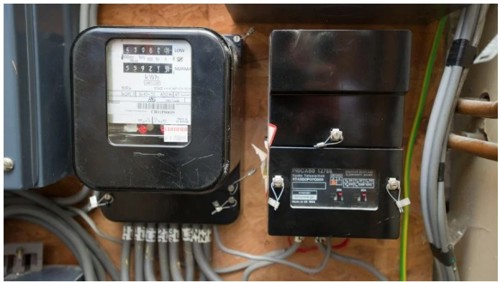
By 30 June 2025, the Radio Teleswitch Service (RTS) will reach the end of its operational life, and the switch off will affect energy customers who have an RTS meter in their home and may mean that their heating and hot water supply stops functioning as normal.
We believe this will affect around 8% of PCH homes, and are writing to those we know will be affected directly to offer information and advice.
Here’s some information on who will be affected and what you can do.
What is the Radio Teleswitch Service (RTS)?
The RTS – also known as the Dynamic Teleswitch Service – allows some older, traditional (non-smart), multi-rate electricity meters to function properly. These include Economy 7 and Economy 10 meters.
The RTS allows these meters to switch between peak and off-peak rates, or turn your heating or hot water on and off. This enables energy suppliers to offer tariffs with cheaper off-peak rates, so you can heat your home and allow your hot water system to warm up for less overnight.
The service was originally due to be switched off on 31 March 2024, but the deadline has been extended to 30 June 2025 to give energy suppliers more time to replace the 600,000 RTS meters still in use.
Why are RTS meters being switched off?
The RTS is now reaching the end of its natural life (it was introduced in the 1980s), so the equipment can no longer be properly maintained. The relatively low number of these meters still in service is another reason for the decision not to refresh the infrastructure.
What happens if I don’t get it replaced?
If you have an RTS meter, once the service is switched off your meter is likely to stop functioning properly. You could see:
Your heating and hot water remain continually on or off or charging up at the wrong time of day. The RTS can control when your storage heaters and hot water warm up. It turns these on when the rates are cheaper and switches them off when it's more expensive.
Your supplier incorrectly charging you. Without the RTS, your supplier might not be able to tell when you used your electricity, meaning it could bill you incorrectly for off-peak and peak usage.
You have a more limited choice of tariffs. As the service is being switched off, you'll find fewer (or no) tariffs being offered for those with an RTS meter.
To stop any of these happening, you'll need to get your current meter replaced. Energy providers are currently contacting customers that have RTS meters to offer a replacement – but you don't need to wait. If you think you have an RTS meter, contact your supplier now to get a replacement.
If you know someone who you think might have an RTS meter, especially those who are vulnerable, encourage them to get it replaced as soon as possible.
How do I know if I have an RTS meter?
Homes using RTS meters are typically in areas with no mains gas supply (they're often flats or in rural areas), and the property is usually heated using electricity or storage heaters.
To check if you have one, take a look at your meter. If it's an RTS meter, you'll see a transmitter or separate teleswitch box next to your electricity meter. It should have a ‘Teleswitch’ label on the outside. Some RTS meters may have the radio teleswitch in the same box. If you have one of these it should have ‘radio telemeter’ printed on it.
Alternatively, you can check on your electricity supplier's website, as some have a list of RTS meters with pictures. If you’re still unsure, contact your electricity supplier who will be able to confirm for you.
Here's what an RTS meter might look like:
A black RTS meter and a black teleswitch box fastened to a chipboard wall, side by side

Be aware of scams – meter replacement is free, so your supplier will never ask you to provide payment details or make any payment when booking an appointment.
Most RTS meter replacements are straightforward and take around two hours to complete.
Once you've had your meter changed, check you're on the best tariff.
Most of the major UK energy suppliers, including British Gas, Eon Next, EDF, Octopus, and Ovo have stated that you’ll stay on the same or a very similar tariff when your RTS meter is replaced.
For some, there may be a small difference to your peak and off-peak timings (the start of your peak hours could be moved by half an hour, for example), depending on the area you live in.
What if I can’t get a smart meter?
If your home isn't suitable for a smart meter (perhaps due to lack of mobile signal) your supplier should get in touch to explain your options. Suppliers won't typically install traditional meters, because manufacturers aren't making them anymore.
You might need to have a special type of smart meter that doesn’t need to connect to the smart meter network. It will be pre-set with the times for switching between peak and off-peak rates.
There are some situations where your energy supplier can’t offer you a smart meter upgrade yet. Speak to your energy supplier to find out more information.



